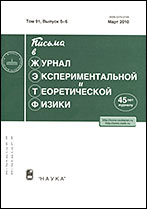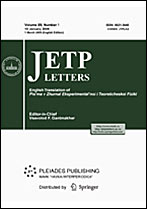|
This article is cited in 17 scientific papers (total in 17 papers)
OPTICS AND NUCLEAR PHYSICS
Stimulated emission at transitions between Wannier–Stark ladders in semiconductor superlattices
A. A. Andronova, E. P. Dodina, D. I. Zinchenkoa, Yu. N. Nozdrina, M. A. Laduginb, A. A. Marmalyukb, A. A. Padalitsab, V. A. Belyakovc, I. V. Ladenkovc, A. G. Fefelovc
a Institute for Physics of Microstructures, Russian Academy of Sciences, ul. Akademicheskaya 7, Nizhny Novgorod, 603950, Russia
b Sigm Plus Engineering, ul. Vvedenskogo 3, Moscow, 117342, Russia
c Research and Production Enterprise Salyut, ul. Larina 7, Nizhny Novgorod, 603950, Russia
Abstract:
New intraband semiconductor lasers — Wannier–Stark lasers — based on simple GaAs (150 Å, quantum well)/GaAlAs (19 Å with an aluminum fraction of 12%, barrier) superlattices have been demonstrated. The amplification mechanism in these lasers is based on population inversion between the ground Wannier–Stark level in the superlattice quantum wells and the weakly populated upper Wannier–Stark level in the wells two, three, or four periods down in the applied potential. Multiple regions of intense stimulated microwave emission near voltages of 8, 13, and 20 V (i.e., in the vicinity of resonances between these Wannier–Stark levels of the superlattice) have been discovered in the laser chips. The stimulated emission emerges in the circuit formed by the chip and its wiring. The emission from one of the chips at a temperature of up to 150 K (near 20 V applied to the chip) occurs at a frequency of about 7.3 GHz and has an estimated power of up to 1 W. It has been shown that the negative conductivity responsible for the emission still persists at 300 K but the emission is unseen owing to high losses in the circuit at this temperature. The superlattice wafer has been grown by metalorganic chemical vapor deposition. It consists of 1000 periods and a stop layer, to produce a metal-superlattice-metal terahertz resonator. Terahertz radiation has not been observed owing to a low amplification, as compared to losses in the resonator. According to the performed experiments, calculations, and discussions, such superlattices as radiation sources in gigahertz, terahertz, and higher frequency ranges could compete with quantum cascade lasers under appropriate optimization of their parameters.
Received: 09.07.2015
Citation:
A. A. Andronov, E. P. Dodin, D. I. Zinchenko, Yu. N. Nozdrin, M. A. Ladugin, A. A. Marmalyuk, A. A. Padalitsa, V. A. Belyakov, I. V. Ladenkov, A. G. Fefelov, “Stimulated emission at transitions between Wannier–Stark ladders in semiconductor superlattices”, Pis'ma v Zh. Èksper. Teoret. Fiz., 102:4 (2015), 235–239; JETP Letters, 102:4 (2015), 207–211
Linking options:
https://www.mathnet.ru/eng/jetpl4704 https://www.mathnet.ru/eng/jetpl/v102/i4/p235
|


| Statistics & downloads: |
| Abstract page: | 249 | | Full-text PDF : | 74 | | References: | 46 | | First page: | 9 |
|



 Contact us:
Contact us: Terms of Use
Terms of Use
 Registration to the website
Registration to the website Logotypes
Logotypes